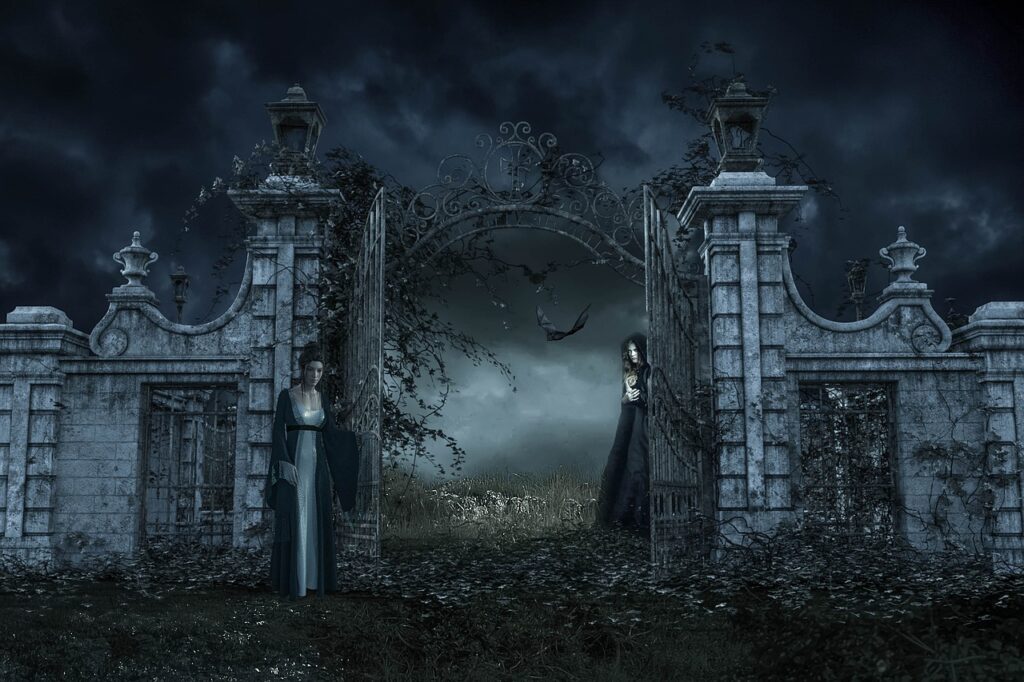When you think of Gothic writing, you might be inclined to picture ghosts and undead beings rising from the grave. Perhaps you think of insane wives in the attic, tormented souls haunting the heathlands, or decaying houses driving their inhabitants mad.
These are some of the best parts of Gothic writing, but what makes them so great is that they point to the underlying B-plot. They bring that hidden meaning to life. The writers used them to make the story’s theme clearer to readers.
How? That’s what we’re talking about today.

Last week I wrote a post, Using Your Secondary Characters Wisely. In it, I mentioned that I had run into some difficulties in the early stages of my current manuscript. The plot was a great one but it still felt flat. One thing I did to solve the problem was to revisit my plans for the secondary characters and to flesh out how they could demonstrate the theme from other angles. That filled out the story a great bit.
But something was still missing.
I figured it out. My B-plot was still hidden, still symbolic. Because it wasn’t tangible, it didn’t have the power that Gothic stories should have.
If you’re unfamiliar with the term B-plot, that’s just a reference to the underlying meaning of the story. The A-plot is your overarching one. The B-plot is the thematic one. I’ll give you an example.
Let’s say you want to write a story about a twelve-year-old boy whose family has uprooted him and moved to a new community. Perhaps they used to live in Boston, where he loved Red Sox games and had lots of friends in his school and in his baseball league. The family moves to upstate New York where he feels isolated. The kids seem strange, the country is quiet and sparsely populated, the house is an old farmhouse unlike his brownstone back in Boston. He’s out of his element.
On the surface, he’s trying to find his way in a new school, with a new baseball team, in which the dynamics are all different, and with his newfound awareness of girls. That’s your A-story, the principle plot.
But underneath it all, you want to tell a story about this boy’s fear that this new environment will change who he is. He wants to hold onto his Boston identity. And he’s not sure he wants to be an adult; he’d rather stay in the comfortable place of perpetual childhood. He’s afraid of becoming someone different. That’s your B-story, the thematic truth you’re exploring.
However you write this story, it could be very interesting. But if you want it to be a Gothic story – and it definitely has the thematic makings of one – what you want to do is make the B-story tangible.
How?
Well, what would represent unwanted change? Change that comes with a lot of fear and consequences? Vampires, for one.
Vampires introduce the idea of being altered in ways that are permanent and potentially disastrous. No more sunshine, no more community, society, life-as-we-know-it. They come with a connotation of thrilling danger, but also fear.
One way this could play out is that your character moves to upstate New York, senses that the other kids are strange and then, part way through the book, discovers that the area is rife with vampires. The kids who seems so different to him are actually the undead.
And they want him to join them.
Do you see how this could bring the B-story to life in a way that’s both exciting and also visceral. The readers feel the truth more intensely through the presence of this added element. It’s not just a vampire story, it’s a story in which the vampires represent everything this boy is struggling to accept. Puberty, a new environment, a different culture.
That’s what Gothic tropes should do. They should elucidate and enhance the theme.
Once I remembered that and worked it out, my story took on a well-rounded life of its own. It’s no longer flat. Now I just need to finish writing it. 🙂 Hopefully this will help you too.
If you enjoyed this post, share it with your friends!